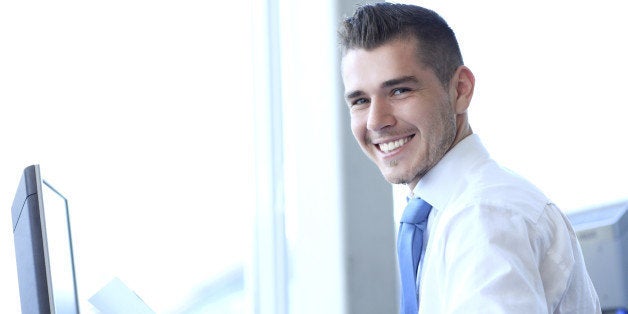
Regardless of who wears the "pants" in your family, there's an 85 percent chance it's the woman in your household making the decisions of what to buy, where to shop and what the best brand is. So it's logical to assume that the male-dominated ad world no longer exists and that we can assume that women are pioneering the post-Mad-Men advertising industry. After all -- women know women, right?
Wrong. I was absolutely mind-boggled when I learned that only a mere three percent of advertisements are created by women. How do men know what we look for in our bras, yoga pants or even our monthly menstrual cycle needs? This gap between who is doing the buying and who is doing the selling seems outrageously unbelievable in this day and age.
But the disconnect isn't just limited to marketing.
Even the most progressive and forward-thinking companies in the world -- Apple, Google, Facebook -- recently released their annual diversity reports that disclose only two percent of Facebook employees are black and only one percent of Google's employees are black. And we aren't witnessing only racial inequality at these influential companies: 70 percent of employees at Google, Apple and Facebook are male.
In this must-read article from the current issue of the New York Times magazine, Nancy Leong, a University of Denver law professor, says "It's almost as if cheerfully and frequently uttering the word 'diversity' is the equivalent of doing the work of actually making it a reality."
As both a first-generation Indian-American and a woman, I find it not only disheartening but also infuriating that a widespread acceptance of such blatant inequality exists across so many industries. Elsewhere in the Times article, writer Anna Holmes muses this about diversity: "Talk is cheap...[and] sometimes you get the sense that the people talking the most about diversity are the people doing the least effective work on it."
It's hard to disagree with what she's saying, given the stats. My personal feelings aside about where the conversation ends and action begins, let's get back to the point that a lack of diversity is just bad business.
Recent studies -- including one commissioned from PWC and The AD Club of New York reported that 85 percent of CEOs whose organizations have a diversity and inclusiveness strategy, experience enhanced financial performance.
Speaking of financial performance, let's look at the lack of diversity in the advertising industry, where it's projected we'll see a record $600 billion in global advertising expenditure in 2015, up six percent from 2014. The $600 billion makes sense when you factor in that the average person is exposed to 5,000 ads a day - companies pay money hoping their ads will lead us to purchase whatever it is they're selling.
And yet, only three percent of Americans trust ads, according to a survey conducted by YouGov. It just begs the question of whether there is a correlation between the fact that 97 percentof the ads we see are created and produced by men while it's women who decide on household purchases (not just the girly, pink things) -- it's decisions on cars, home remodeling and auto repairs, too.
So what can those of us outside of the boardroom do to show that we care about companies changing these statistics and improving the stats about diversity we see in their annual reports? If you want to add your voice to this demand for more diversity and inclusion, digital activism is a great place to start.
Recently there have been some great digital efforts offering those of us who don't have the power to hire the chance to let the heads of companies and the world know that #diversitymatters to us. #workplacediversity funnels stories about diversity issues and offers advice on fixing workplaces that are too white. #hireautism encourages companies to consider hiring people with autism. The #womenintech feed calls attention to the gender gap in technology industries.
The advertising industry is also, finally, taking the charge to change the status quo: just last week, The AD Club of New York, the advertising, marketing and media industries' aggregator for leaders, influencers and agencies, launched the #imPARTofDIVERSITY social media campaign to raise awareness of the need for diversity and inclusion in today's workforce (Full disclosure: The AD Club of New York is a client of Powell Communications, where I am employed).
We should all join in -- to embrace our differences and advocate for the inclusion of others, not despite their differences, but because of them. In the year 2015, when we have had a black President and same-sex marriage is finally legal, there remains a shocking lack of diversity and rampant discrimination in the workplace. Let's band together to tell those people in power that inequality is unacceptable, and that we will not accept is as voters or consumers.

